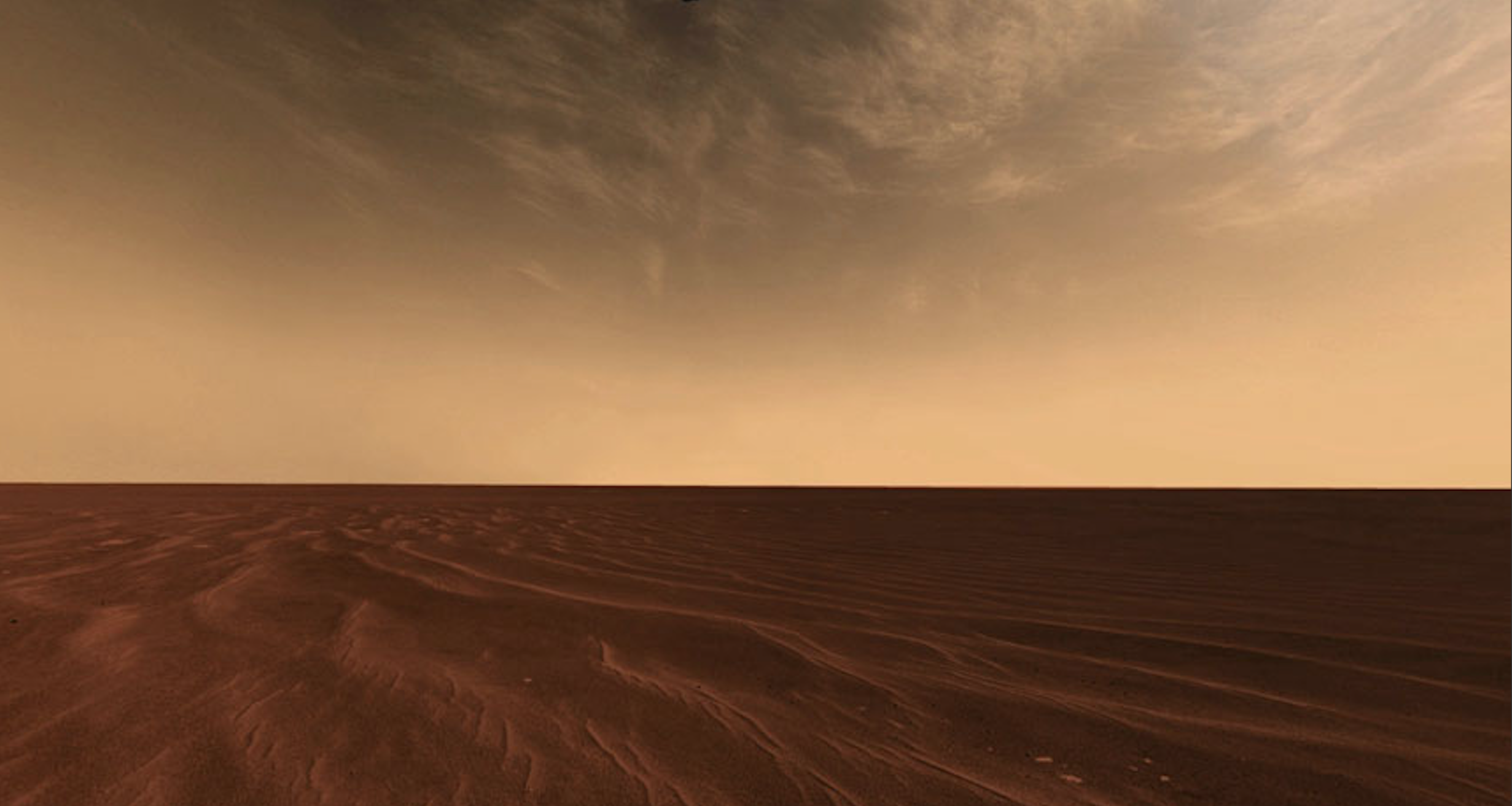Mysterious Clouds on Mars Formed by ‘Meteoric Smoke,’ Study Says

Credit to Author: Becky Ferreira| Date: Mon, 17 Jun 2019 15:11:52 +0000
The robots we’ve sent to Mars have captured beautiful views of clouds rolling across its alien skies, or forming over prominent features like volcanoes.
Now, scientists have discovered that another type Martian cloud, which has previously eluded explanation, is created from the debris of meteors that burn up in the planet’s atmosphere. This “meteoric smoke,” described in a paper published Monday in Nature Geoscience, stimulates cloud formation at altitudes between 30 and 60 kilometers.
“Until now, meteoric smoke has been neglected in general circulation model studies of the formation of Martian water ice clouds,” said the study’s authors, who were led by Victoria Hartwick, a graduate student at the University of Colorado Boulder. “We conclude that Mars atmospheric simulations that neglect meteoric smoke do not reproduce the observed spatial distribution of water ice clouds.”
These meteoric smoke clouds are distinct from low-altitude clouds that form when dust particles are kicked up from the Martian surface by winds, and also differ from high altitude clouds that nucleate around carbon dioxide particles, the team said.
“From what we can tell, these [meteoric smoke seeded] clouds form throughout the middle atmosphere and in all seasons,” Hartwick told Motherboard in an email. “The biggest control on their formation location is temperature.”
The special clouds form during relatively cold weather, such as during the Martian night, when water ice vapor can build around interplanetary dust grains that reach the middle atmosphere. A similar process of cloud formation is also observed on Earth when meteoric dust falls into our planet’s skies.
Read More: What’s That Weird Cloud That’s Been Looming Over Mars for Weeks?
The team used data from NASA’s Mars Atmosphere and Volatile Evolution (MAVEN) orbiter to show that about three or four tons of alien dust slams into Mars’ atmosphere every sol, which is the Martian version of a day. Only a fraction of this interplanetary material sprinkles down to lower altitudes, but that is more than enough to encourage cloud formation.
The new research not only explains how these enigmatic clouds form on Mars, it also suggests that meteors may play a larger role in the Martian climate than previously assumed. For instance, meteoric smoke could help explain cloud formation during Mars’ early years, when the planet was warmer, wetter, and possibly conducive to life.
“This is exciting work for a number of reasons,” Hartwick told Motherboard. “We might expect a process similar to this to be happening on any number of other terrestrial planets, including outside of our solar system.”
“Ultimately, this shows that planetary climate isn’t simply self-contained; it can be influenced by its solar system or planetary environment,” she said.
This article originally appeared on VICE US.